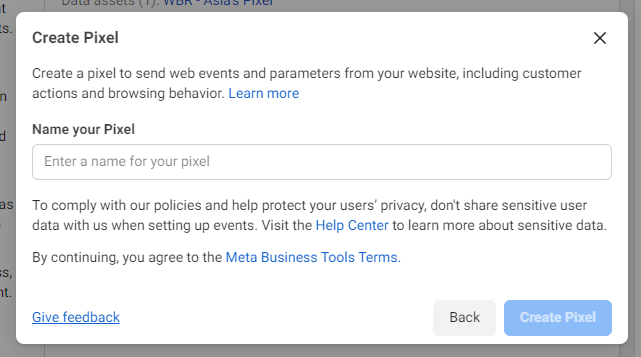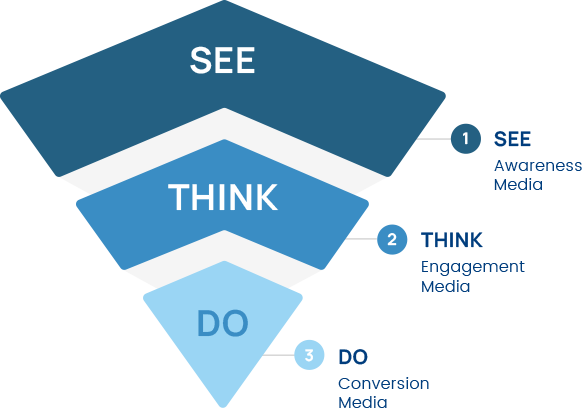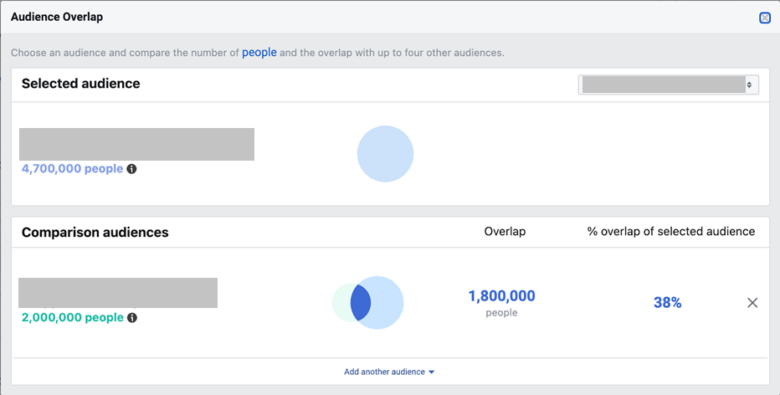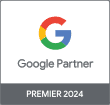In the past, your business might have found good luck with an automated Facebook strategy. With minimal adjustments, you could let it run and see regular profits.
These days, however, things are rapidly changing on Facebook, Instagram, and other social media platforms. It’s not just that iOS 14.5 and ongoing calls for increased privacy limit your access to third-party data and make it harder to design effective audiences.
The social media companies themselves are changing.
In short, you can’t rely on campaign strategies of the past to get the returns you need to sustain your eCommerce business in the future.
So, how do you determine what’s working (and what’s not) to optimize your strategy moving forward?
With this guide, you’ll learn how to review your accounts, campaigns, ads, and reporting to identify errors and opportunities for improvement, including the most common ones we find among our eCommerce clients.
But, if reading this guide is as close as you want to get to actually auditing your Facebook ads, that’s okay, too. Request a free proposal from our team to get your free Facebook ads audit today.
Now, let’s get started.
Table of Contents
- What is a Facebook Ads Audit?
- How to Audit Your Social Ad Accounts
- Start Your Facebook Ads Audit Today
What is a Facebook Ads Audit?
The term “Facebook ads audit” is a little bit of a misnomer. Today, both Facebook and Instagram are unified under the Meta platform. For this reason, it makes sense to audit both branches of your Meta ads together.
Fortunately, many of the things you’ll look for in your Facebook ads audit will also apply to your Instagram ads (and vice versa).
For many eCommerce brands, Facebook and/or Instagram may be the biggest drivers of revenue — but that doesn’t mean they’re always achieving the best results possible. A Facebook ads audit determines the effectiveness of your ad spend and helps you decide how to get the best return on ad spend (ROAS).
This audit can be as in-depth or as superficial as you want. You can, for example, complete an audit in 30 minutes — but the more detailed your audit, the better your insights, and the more you’ll be able to improve your results.
We recommend auditing whenever your results start to stagnate. At the bare minimum, schedule a comprehensive audit for your account at least once every year.
When we take on a new social media advertising client, we always begin with an audit of their previous marketing attempts, evaluating what’s been done before and how effective it was. That way, we can determine the best course going forward, whether it’s as simple as reapportioning ad spend to emphasize the most effective campaigns or as complex as crafting a new strategy from the ground up.
Why It Matters: The Real-Life Example
Consider the case of one of our eCommerce clients. For anonymity, we’ll call them “Artisan Furniture.”
Before our partnership, they were spending more than $2,000 per month on their social campaigns and getting exactly zero ROAS.
After auditing their campaigns, we helped them increase their ROAS to 29.5x — in other words, a return of $29.50 for each $1 spend on ads — in just three months.
How’d we do it? By identifying common errors such as:
- Not running enough ads
- Running the same ads too frequently
- Having the wrong campaign objectives
- Building ineffective audiences
- Not tracking results properly
While we can’t guarantee that you’ll see the same level of results from your Facebook ads audit, we can guarantee that an audit will reveal any critical existing campaign errors bringing down your overall revenue.
How to Audit Your Social Ad Campaigns: eCommerce Version
While there are many things you can include in a Facebook ads audit, we’ll work with the framework we use for every new eCommerce client.
Below, we’ve detailed a thorough (though not exhaustive) audit that will identify most of the common errors we see in eCommerce social marketing campaigns.
We’ve also suggested ways to go even more in-depth, as well as provided some streamlined 30-minute audit options that you can perform as often as you’d like.
Step 1: Review your account layout.
It can be tempting to skip account-level steps in an audit when you want to jump directly to the campaigns making or breaking your ad return.
However, it’s critical to regularly review your Facebook ads account structure.
Using your Facebook ads manager, do a top-level check of tracking, strategy, and spending. These basic steps will determine whether your campaigns have a firm foundation or if they’re doomed from the start.
1. Check your tracking configurations.
You can’t know how well your Facebook marketing is performing for your eCommerce site if you aren’t properly tracking your traffic from Facebook — and that means setting up your Facebook pixel.

Your Facebook pixel can track numerous events resulting from your Facebook ads. Choosing the right ones will only provide you with data on how to retarget and remarket the leads you capture with your campaigns.
Of course, you always want to track purchases. However, you also likely want to track other events, such as:
- Newsletter signups
- Content views
- Landing page dwell time
- Tool usage on your site
These other events, called micro conversions, can reveal when potential customers are taking steps that build trust and engagement (and which eventually can lead to conversions). This data allows for successful retargeting of certain audience members with different ad sets — especially important for big-ticket items that may require numerous touches before conversion.
Don’t forget to take advantage of partner integrations if they’re available for your eCommerce platform, as this can make it much easier to complete the setup accurately.
2. Review your top-level strategy.
When reviewing your top-level strategy, ask yourself three questions:
- Are your campaigns capturing the full sales funnel?
- Is your bid strategy effective and efficient?
- Are you delivering a consistent, seamless message throughout the funnel?
Full-Funnel Sales Strategy
Your campaigns should capture potential buyers at all points along the sales funnel. You can accomplish this with our “See, Think, Do” framework.

This strategy uses three different ad sets and goals:
- Promote awareness among those who don’t know about your product
- Encourage those who show interest in your products
- Persuade those who are most likely to buy
(You might also add a “Reflect” stage for remarketing those who have already purchased from you.)
If all your campaigns have the same goal (such as “purchase”), you don’t have a full-funnel campaign. You’ll need to use the micro-conversions discussed above to separate the different stages in your new campaign strategy.
Bid Strategies
Next, review your bid strategy.
Meta offers three types of bidding: spend-based, goal-based, and manual.
Spend-based strategies focus on spending your budget in order to maximize results. Goal-based strategies focus on achieving a certain cost per result or ROAS, though these are not guaranteed. Finally, manual lets you set a bid cap manually. Consider whether your strategy is more cost-effective using a cost-per-click (CPC) or cost-per-mille (CPM) bid strategy.
Meta offers a bid strategy guide, but these choices are something to review regularly, especially if your results are less-than-stellar.
If you’re not happy with your paid social return, consider adjusting your bid strategy to a cost-cap model. This will allow you to identify low-hanging fruit and control your spend to capture that. However, be cautious of your campaigns getting stuck in learning phase from a too-narrow audience size.
Consistent Messaging
Finally, make sure your potential customers are getting consistent messages as they progress through your campaigns. Otherwise, you are likely to lose them.
For example, if you start building an audience around the message that you are selling a quality, luxury brand, and then switch to a “low price” CTA to try to close the deal, you might lose people who don’t want a cheap product.
If you think that price is your best closer, consider a message like “value” at the See stage, then “quality” (for price) at the Think stage, followed by “low price” (for quality) at the Do stage.
3. Check ad frequency and overall budget.
Ad frequency is how often your ads are being shown to potential clients. The higher the ad frequency, the faster you will burn through your target audience and generate audience fatigue.
You can limit ad fatigue by keeping your “first-time impression ratio” (the proportion of people who are seeing the ad for the first time) high. We typically recommend keeping this above 67%, but you can use this guide to develop your own formula.
You can control first-time impression ratio by tweaking ad frequency, moving audiences through your sales funnel, and periodically updating your ad text and creative.
At the same time, make sure your budget is large enough to achieve the results you’re hoping for. Meta advertising can be very competitive, and we recommend a budget of at least $5,000 per month for 90% of our clients.
Both of these should be part of your weekly 30-minute Facebook ads audit.
Step 2: Review your reporting strategy.
Every decision you make about your campaigns depends on key ad performance metrics like conversion rate, click-through rate (CTR), and ROAS.
But how do you know that the data is accurate?
By reviewing your reporting strategy frequently and thoroughly.
Ostensibly, Meta gives you plenty of information for making decisions. However, what Meta doesn’t tell you is what it doesn’t tell you.

Meta reporting has always had holes, and it’s only gotten worse since iOS 14.5. The most reliable way to get the full story today: use multiple reporting tools to build a more complete picture of how your campaigns are working.
In your 30-minute weekly audit, take time to do a quick review of your conversion tracking.\ At a minimum, compare your Meta reporting to your Google Analytics and the data you get from your eCommerce platform (Shopify, Wix, Adobe Commerce, WooCommerce, etc.).
In the current environment, you probably won’t be able to attribute 100% of conversions to specific campaigns. However, you need to have enough attribution data to decide how best to allocate your ad spend — not just between Facebook ad campaigns, but also between your different digital marketing channels (Google Ads, search ads, display ads, etc.).
If Meta and Analytics aren’t giving you that level of data, recheck your Meta pixel setup. If that’s right, but you’re still not getting enough data, you might need to consider third-party tools to fill in the gaps.
Step 3: Review your campaign organization.
Campaign structure controls how you deliver your ads to your audiences.
There are three big things to consider here: your audiences, your automation, and your testing.
1. Review your audiences.
First, check which audiences you are using for your campaigns. Make sure you’ve identified good audiences for your See stage campaigns, so you can bring in the largest customer base possible.
Custom audiences are an essential starting place, but lookalike audiences can help you effectively expand your targeting by reaching out to people who are similar to your previous purchasers or potential customers.
Confirm that you’re properly segmenting your audience at each stage of the funnel. Use micro-conversions to move members of your audience from the See stage ads to the Think stage ads, then to the Do stage ads.
You don’t want to overlap your audiences and deliver multiple stage ads to the same people. This isn’t just wasted ad spend; it can also increase fatigue and create negative brand associations.
Check for potential overlap using the Audience Overlap Tool in the Audiences manager, and prevent future overlap by applying exclusions to your campaigns.

If you haven’t done a deep dive into your audience creation and segmentation since the iOS 14.5 update, now’s the time. Check out our strategies for dealing with these new challenges now.
2. Explore Facebook’s automation.
Much of Meta’s power comes from the automation potential it offers. So, if you haven’t already, explore Facebook’s automation options for ad delivery, and decide which may be right for your campaigns.
If you turn on some of these optimization tools, make sure to review them during your weekly audit. Properly configured, automation can improve your ROAS — but if you’re not using it right, it can spend a lot of money quickly with little return.
Note, however, that all automated campaigns require a learning period for Facebook’s algorithm to figure out the best bid strategies, so don’t turn automation on and off too quickly.
3. Consider additional testing.
Here at Inflow, we recommend regularly testing your Facebook ads strategies. So, during your audit, take the time to review your testing history for your current campaigns.
If you haven’t done much testing at the campaign level, now might be a good time to use A/B testing to improve your results. Your gut instincts may lead you to a good campaign, but until you’ve tested them against other possibilities, you don’t know that it’s the best.
After all, if you’re spending $5,000 a month on Meta ads, you want to make sure you’re using the best campaign possible.
Step 4: Review your ad creative and copy.
Whether in your yearly audit or your weekly 30-minute audit, you should regularly review the creative you’re using in your campaigns.
Our recommendation: Start with a variety of product images, videos, and user-generated content (UGC), and use diverse ad formats to reach the largest possible audience.
(Check out our tips for designing effective Facebook ads here. Remember that Instagram ads have their own flavor, and deserve a dedicated approach.)
Make sure you’re targeting your creative and copy specifically to the funnel stage where the ads are being used. For example, your See stage creative might focus on the full range of your products, while the Think stage creative focuses on more specific products. Ad copy should evolve along similar lines.
As always, A/B testing will help you identify the most effective ads for each funnel stage.
Update your creative frequently to keep your ads fresh for your audience. Audience fatigue can be expensive and may cause lasting damage to your relationship with your audience.
However, don’t switch up your ads too often. It takes time for Facebook’s automation to learn how to optimize your ads, so switching ad creative and copy too often can also hurt campaign performance.
After a few cycles of looking at CPM, CPC, and CTR, though, you’ll better understand when to start testing new ads so they’re ready to deliver when the current ads need to be retired.
If you are having trouble with Meta disapproving your ads, employ our Meta advertising diagnostic program to figure out why.
Start Your Facebook Ads Audit Today
Facebook advertising is often a key part of successful digital marketing for your eCommerce store. However, because returns are not guaranteed, they can also be a big drain on your marketing budget.
To make sure you’re getting the returns you need to stay profitable, it’s important to audit your Meta ads regularly.
Keep this guide close at hand, and review it whenever you see your results start to slip. More often than not, the cause can be found in these common errors and opportunities for improvement — it just takes a little detective work to find them.
If you don’t have a Sherlock Holmes on your team (or you simply don’t have the time to dive deep into your campaigns), then it’s time to bring in an expert. Our team of paid social experts can review your eCommerce accounts for free and create a marketing strategy to maximize your ROAS. Request a free proposal today to get started.
In the meantime, lean on these additional resources as you embark on your DIY audit:










0 Comments